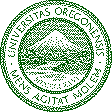Northwest Terascale Research Projects:
Parton Showers and Event Structure at the LHC
Topics to be discussed
There are a host of theoretical and modeling issues in event generators: the algorithms of the showers and how they connect to a renormalization group treatment of the QCD physics, the treatment of spin and color, how hadronization is treated and how we model the underlying event, among others. These connect to issues in how well the event generators match the structure of real events and how we can test how well the event generators are doing. It is of particular importance to understand where the tails of distributions are of experimental importance and to understand how well the event generators do in treating those tails. We also need to understand how we can use data to test how well the event generators are doing. Among the issues that we could discuss are the following list of interrelated topics.
- How well do we model the substructure of jets? To what extent is this important in picking out jets made by the decay of a heavy particle compared to ordinary QCD jets? How is this affected by issues of parton splitting kernels, hadronization, the underlying event, and spin and color within the jet.
- How well do we model jets that contain just a few hadrons?
- What do we have to get right in order to predict the cross sections for missing energy signatures of new physics?
- To what extent do we have confidence in the models for underlying event. How can we best test these models against LHC data. What features of the underlying event are most important for new physics searches.
- Monte Carlo event generators can be improved by matching the shower-generated events to exact tree level matrix elements. How accurate is this? Where should it fail?
- How are we doing in understanding the color structure of events. This applies to the perturbative color structure and to such non-perturbative issues as color string formation (if indeed, the string model provides the best description) and whether color strings reconnect after they are formed.
Last updated 9 February 2009

Davison E. Soper
Institute of Theoretical Science
University of Oregon
Eugene OR 97403 USA
soper@uoregon.edu

